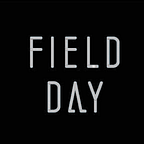Joe Riederer Schools Us on Siftr
Meet Joe Riederer.
Joe is one of our Field Day Fellows this spring. He teaches middle school science by day. And by night? He creates resources that he offers his colleagues for free. We are fortunate that he decided to turn his attention to Siftr.
When Joe discovered Siftr, he knew he had found something special that would take learning outside the classroom. He wanted to ensure more teachers understood the potential for Siftr in their classrooms, too, so he created videos that he posted to YouTube (Intro to Siftr and Creating a Project with Siftr) and powerpoint tutorials posted here. He also made a Siftr manual — which we were expecting to have to do ourselves! He also began running workshops for elementary and middle school teachers. Oh yeah, and he invests time here at Field day researching, developing, and testing our Mini Games projects (The Yard Games.) We caught up with Joe over the phone in between classes to learn what motivated him to do so much “extra credit.”
Having taught for 35 years, Joe knows student engagement is key to learning. “Siftr extends what’s happening in the classroom outside,” Joe said. It’s different from social media platforms (like Instagram) because it allows a laser-like focus. “It’s teacher mediated, student generated. We can focus the extent of what the kids are looking at.”
He recently created a Siftr for his seventh graders about electricity. He wanted the students to think about how electricity moves from where it’s produced to where it’s used. Students photographed power stations, transformers, solar panels, and more. One even sent the Siftr link to his grandpa in Florida, who added to the class project. Want to add to this project? Check it out here: Power to the People
This is engagement, this is excited kids learning outside official “learning hours!” And we love it.
“Some of the best learning happens when you don’t know you’re learning,” Joe said. That’s why it’s important to model abstract concepts in a fun way, in an environment kids are comfortable with. Joe looks for ways to “sneak in some science” without kids knowing it. He is convinced kids can learn and have fun at the same time.
He has many ideas for “tricking” kids into learning and engaging with the community around them. Really, there’s nothing tricky about it! Joe simply works hard to design authentic learning experiences for his students — which makes them excited to learn.
“I’m rolling out my ‘secret plan’ after spring break,” he said, with a smile in his voice. “When I’m hiking on trails, I see so many teens staring at their phones while they’re in the woods. I’ve wanted to use that technology to generate interest and a connection with other kids and nature, a larger awareness of a social need.”
His secret plan? To locate and map milkweed plants now so his students can find monarch butterflies in the fall. “This way, they’ll take what they learn in the classroom outside to see the application of it,” Joe said. Want to join that project? Check it out here: Got Milkweed?
